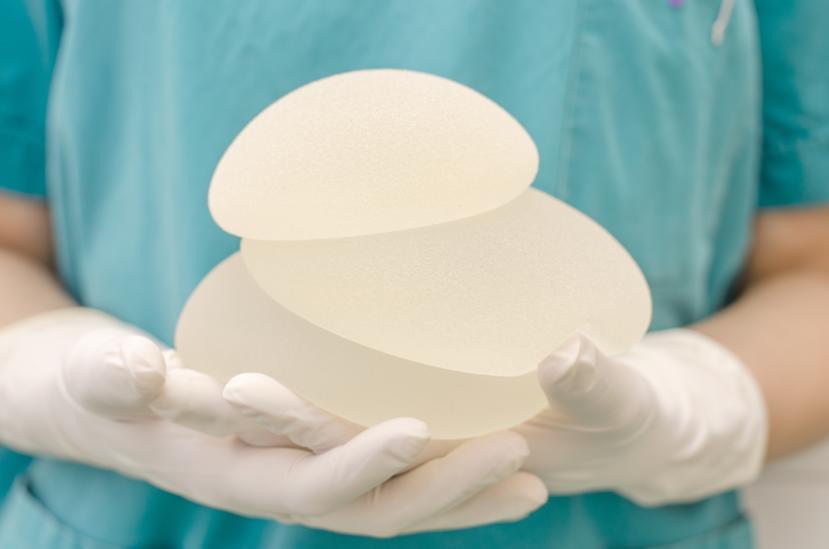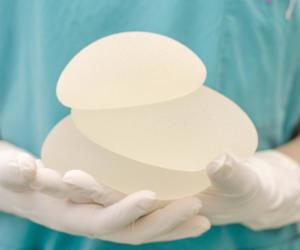Breast Augmentation: What Are Silicone Implants?

Silicone breast implants
Silicone gel-filled implants have an outer shell made of silicone. The gel has a natural feel just like a natural breast. The silicone gel has a shell that prevents the breast implant from collapsing.
If you go for silicone implants, you will need to pay regular visits to your surgeon to ascertain your implants are working properly. MRI screening or an ultrasound will check the condition of your breast implants.
FDA has approved breast augmentation using silicone implants for women aged 22 and above.
How the breast implant procedure is done
A woman’s breasts continue to grow until late in her teens and sometimes growth extends into her early 20s. To receive a saline-filled implants breast augmentation procedure, FDA requires a candidate to be 18 years old, and for silicone implants she needs to be at least 22 years old.
When deciding on your surgeon, get one with many years of experience. Complications are less likely to occur later on when you have a surgeon with surgical training of more than five years and with at least two years of plastic surgery experience.
A medical evaluation will be performed by your surgeon before the procedure is done. Discuss with your surgeon on your expectation and get their feedback. If you are taking some medications, your surgeon might request you to discontinue some days or maybe weeks prior to the surgery.
You may get the procedure done in a health facility where you will stay overnight or as an outpatient.
The procedure can take one to two hours. General anesthesia is likely to be administered, whereby you shall be asleep and no pain will be experienced.
A cut will be made under the breast, under the arms or around the nipples by your surgeon. The cut made will depend on one’s body, the form of implant and how big the enlargement is being made.
The surgeon shall insert your breast implant inside a pocket underneath or above the chest muscles. Once the implant is evenly placed, your surgeon shall close the cuts using surgical tape or sutures.
Risks associated with breast implants
Both silicone and saline breast implants have similar risks. These include:
- Scar muscles which distort the breast’s implant shape (capsular contracture)
- Infection
- Breast pain
- Change in the breast and nipple sensitivity, which is normally temporary
- Implant rupture and leakage
Correcting any of these complications may require another surgery to either replace or remove the implants.
What happens when an implant gets ruptured?
The approach depends on whether it is a silicone or saline implant.
Ruptured silicone implant
It is very difficult to notice a ruptured silicone breast implant. This is because all silicone happens to stay intact inside the fibrous muscles which forms in the areas surrounding your implant. This is also referred to as a silent rupture.
Silicone gel leakage hasn’t been reported for causing long-term health or systemic problems i.e. reproductive problems, breast cancer or connective tissue ailments like rheumatoid arthritis. But the rupture may finally result to breast pain and variation in the shape or contour of your breasts.
When this occurs, the doctor will most probably recommend a surgical procedure to remove your implant. Another implant can be placed during the procedure if you so wish.
When an MRI scan shows a ruptured implant but there are no signs nor symptoms, you and your surgeon will weigh the benefits and risks in keeping or removing the implant.
Recovery after a breast implant
Your breasts have to be covered using gauze after the procedure. If you have drain tubes, they will be removed within a couple of days. It is appropriate to put on a surgical bra when you are healing.
After the implant surgery, you should go easy on everything i.e. don’t lift anything heavy until maybe after six weeks.
Pain relievers like acetaminophen that can be purchased over-the-counter can be used. Alternatively your surgeon might prescribe some pain medication.
You will have some inflammation in the area where the surgery took place, but the inflammation will ease and your scars will disappear over time.
Possible complications
Even if a breast implant procedure is a cosmetic surgery, it may have risks like:
- Changes in the nipple and breast sensation
- Scar tissue developing and hardening around the implant part
- Size and shape difference of your implants i.e. uneven breasts
- Scarring
- Infection
- Bleeding
Implants can easily leak or rupture. When a rapture occurs to a saline implant, the body safely absorbs the saline. On the other hand, any silicon leak will remain inside your implant or leak from its shell. Saline implants deflate after rupturing. However, silicone implants don’t cause any obvious symptoms after rupturing and this is also known as a silent rupture.
Maintenance
Breast implants don’t always last for a long time. You may be required to replace them after having complications or when the shape and size change over the years.
Surgeons recommend that women who have silicone implants go for MRI scans three years after going through the implant procedure. MRI scans for examining silent ruptures should then follow after every two years. When your implant gets ruptured, it should be replaced or removed.
Breast implants cause difficulty when getting a mammogram, but advanced X-ray views may be done. There could be a small window for breast implants to cause you to develop breast cancer. Breast implants can also cause difficulty in breastfeeding.
Factors to consider before undergoing breast implants
If you are considering undergoing reconstruction or breast augmentation, it is vital to understand all that breast implants entail. Apart from improving your appearance, remember that:
- Breast implants don’t prevent breasts from sagging - Sagging breasts require breast lift alongside breast augmentation.
- Breast implants don’t always last for many years - Implant ruptures are inevitable. According to statistics about 20 percent of women with breast implants get them removed between the eighth and tenth year.
- The breasts continue changing even after augmentation - Certain factors i.e. weight gain or reduction will definitely affect how your breasts appear. Either of this problems can lead to another procedure.
- Mammograms can be even more complicated – When you have implants, regular mammograms shall require more specialized views.
- You may need regular MRI scans – FDA requests you to regularly monitor silicone implants by having MRI scans after every two years. The scans should commence three years after your first implant surgery.
- Breast implants could hinder breast-feeding – Some women breastfeed normally while others experience difficulty.
- Insurers rarely cover any breast implant – Unless the situation is different i.e. implant reconstruction arising after mastectomy can be covered. But all expenses that come along the breast implant augmentation surgery including imaging tests which comes later, are footed by you.
- Additional surgery might be required after the removal of your breast implant – If you remove your implants, a breast lift will be necessary or any other procedure to assist the breasts to retain an aesthetically splendid appearance.
Is breast implant safety actively monitored?
Both silicone and saline implants are proven safe for breast reconstruction and augmentation. Researchers are continually following up on new equipment by searching for evidence on continued effectiveness and safety of silicone and saline implants.
The bottom line
Based on one’s body type, breast anatomy and various factors, your surgeon may recommend either form of implant over the other for optimal result. However it’s up to you to choose between a silicone and saline implant.












